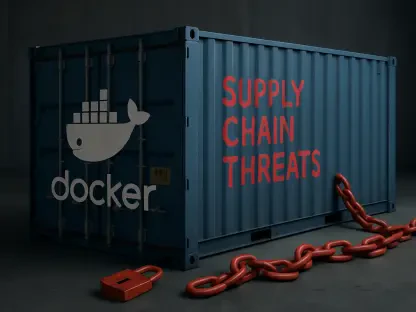Imagine a future where artificial intelligence effortlessly syncs with any tool, database, or application in real-time, unshackled from the constraints of its preloaded knowledge, and transforms how we interact with technology on a daily basis. This vision is becoming reality with the Model Context Protocol (MCP), an innovative open-source standard unveiled by Anthropic, the creators of Claude, on November 25, 2024. MCP is engineered to supercharge large language models (LLMs) by serving as a universal connector, comparable to USB Type-C in the hardware realm, linking AI to external systems with unprecedented ease and robust security. This breakthrough addresses a persistent barrier in AI development: the inability of LLMs to access live data or interact with third-party services without cumbersome, tailor-made solutions. By offering a standardized framework, MCP enables AI to pull in current information, fostering the creation of smarter, context-aware systems. Whether it’s retrieving data from a remote server or integrating with enterprise software, this protocol is poised to transform how AI embeds into everyday operations. The significance of MCP lies not just in its technical prowess but in its potential to redefine interoperability across industries, making AI more adaptable and efficient. This article delves into the mechanics of MCP, its far-reaching benefits, the challenges it faces, and its growing impact on the tech landscape, painting a comprehensive picture of a standard that could shape the next era of AI innovation.
Breaking Down Barriers in AI Integration
The journey of integrating AI with external systems has long been fraught with complexity, as developers have had to craft individual solutions for each unique model and tool pairing, a process that drains both time and resources. MCP steps in as a revolutionary framework, eliminating this fragmented approach by providing a cohesive method for communication between LLMs and diverse external resources. Often likened to a universal adapter, this protocol simplifies the once-daunting task of connecting AI to live data sources or applications, making integration as intuitive as connecting a peripheral device to a computer. By standardizing these interactions, MCP reduces the technical overhead that has historically hindered scalability in AI deployment. This shift is particularly vital as businesses increasingly rely on AI for dynamic tasks that require real-time information, moving beyond static responses to more interactive and informed outputs. The implications are profound, especially for industries where quick access to updated data can mean the difference between efficiency and obsolescence, setting a new benchmark for how AI can function within complex ecosystems.
Beyond just simplifying connections, MCP addresses the critical issue of cost and effort in AI development by streamlining the engineering process. Enterprises no longer need to invest heavily in bespoke integrations for each new tool or database an AI model must access. Instead, MCP offers a plug-and-play solution that can be applied across multiple platforms, significantly cutting down on development cycles. This efficiency is a game-changer for organizations looking to scale their AI capabilities without breaking the bank, allowing them to redirect resources toward innovation rather than repetitive technical challenges. Furthermore, the protocol’s design ensures that AI systems can maintain conversational context over extended interactions, a feature that enhances user experience in applications ranging from customer service bots to enterprise management tools. As a result, MCP not only solves immediate integration hurdles but also lays the groundwork for more sophisticated, user-centric AI solutions that can adapt to evolving needs with minimal friction.
Industry Momentum and Adoption Trends
The tech sector has swiftly embraced MCP, with major players such as OpenAI, Google DeepMind, and Microsoft integrating the protocol into their ecosystems shortly after its debut. This rapid uptake signals a strong industry consensus on the need for a standardized approach to AI connectivity, positioning MCP as a potential cornerstone of future developments. From developer platforms like Zed and Replit enhancing coding tools to enterprise solutions enabling seamless cloud management, the protocol’s influence is already visible across diverse applications. Microsoft’s incorporation of MCP into initiatives like Copilot Plus PC further underscores its relevance, highlighting how even established tech giants see value in adopting this open-source standard. This widespread adoption reflects a broader trend toward collaborative innovation in AI, where interoperability is no longer a luxury but a necessity for staying competitive in a fast-evolving market.
Equally noteworthy is MCP’s alignment with contemporary software architectures, such as modular, cloud-native systems that prioritize flexibility and scalability. By fitting seamlessly into these frameworks, the protocol ensures that AI can be deployed in environments that demand agility and cross-platform functionality. This compatibility is driving its integration into tools used by both technical and non-technical users, from personalized assistants syncing with enterprise apps like Slack to systems that allow natural language queries of complex databases. The growing reliance on MCP in these contexts points to a shift toward context-aware AI that can handle real-time tasks across multiple domains. As more companies recognize the efficiency and innovation potential unlocked by this standard, its role in shaping the AI landscape continues to expand, promising a future where seamless integration is the norm rather than the exception.
Unveiling the Mechanics of MCP
At its core, MCP operates through a client-server architecture, a design that facilitates secure and efficient data exchange using established protocols like HTTP with robust security measures and server-sent events. This structure is built around three primary components: the MCP Host, which serves as the main interface for AI applications or development environments; the MCP Client, embedded within the host to translate user requests into a standardized format for communication; and the MCP Server, an independent entity like a database or API that processes and responds to these requests. Together, these elements ensure that LLMs can access external resources in a controlled manner, maintaining strict boundaries to prevent unauthorized data exposure. This setup not only enhances the functionality of AI by connecting it to live information but also prioritizes security, a critical factor in enterprise adoption where data integrity is paramount.
The real magic of MCP lies in how it elevates the capabilities of LLMs beyond their static training data, reducing common issues like inaccuracies or “hallucinations” in AI responses. By enabling real-time data retrieval, the protocol allows models to make informed decisions and even reject user prompts that are impractical or unfeasible, a significant step toward reliability. This functionality transforms AI from mere responders into dynamic systems capable of maintaining context across interactions, a feature essential for applications requiring sustained dialogue or multi-step processes. Whether it’s a customer support bot recalling previous exchanges or a business tool orchestrating complex workflows, MCP empowers AI to operate with a level of sophistication previously unattainable. This architectural innovation marks a pivotal advancement, setting the stage for more intelligent and adaptable AI systems across various sectors.
Unlocking Benefits and Diverse Applications
One of the standout advantages of MCP is its ability to drive efficiency and reduce costs in AI integration, a pressing concern for enterprises scaling their technological capabilities. By providing reusable client libraries that expose available external tools, the protocol eliminates the need for custom-built connectors for each model-tool interaction, a problem often referred to as the N x M challenge. This streamlined approach accelerates development timelines and slashes engineering expenses, allowing companies to allocate resources more strategically. Businesses adopting MCP can integrate AI with existing systems faster, focusing on creating value rather than wrestling with technical complexities. This cost-effectiveness is particularly beneficial for organizations aiming to embed AI into multiple facets of their operations, ensuring that innovation doesn’t come at an unsustainable price.
Equally impressive is the versatility of MCP, demonstrated by its wide array of applications across industries, catering to both technical experts and everyday users. In business settings, it enables multi-agent automation, standardizing communication for streamlined processes, while in cloud management, it allows non-technical staff to interact with databases using natural language queries. Personalized assistants powered by MCP can autonomously handle tasks like scheduling via integrations with tools like Slack or Notion, enhancing workplace productivity. Meanwhile, in software development, its presence in integrated development environments boosts code generation and debugging accuracy. Even creative fields benefit, with tools like Figma leveraging MCP for AI-driven design solutions. This broad applicability not only showcases the protocol’s adaptability but also opens up opportunities for startups to innovate by building compatible applications, further expanding the ecosystem of AI-driven solutions.
Navigating the Roadblocks Ahead
Despite the transformative potential of MCP, significant challenges remain, particularly around security, given its relatively early stage of development. Experts have raised concerns about vulnerabilities such as prompt injection, where malicious inputs could exploit LLMs, and server misconfigurations that might expose sensitive data or critical functionalities. Studies indicate a troubling prevalence of poorly configured MCP servers, making them susceptible to attacks that could compromise enterprise assets. These risks highlight a critical need for robust authentication and authorization mechanisms to safeguard interactions between AI models and external systems. As adoption accelerates, addressing these security gaps will be essential to prevent breaches that could undermine trust in the protocol and hinder its widespread acceptance.
Moreover, the complexity of implementing MCP correctly poses another hurdle, especially for organizations eager to capitalize on its interoperability benefits without fully understanding the associated risks. Rushed deployments could lead to unintended privacy disclosures or enable attackers to embed harmful instructions within servers, a threat that demands careful attention. Balancing the drive for seamless integration with the imperative of protecting data and systems is a delicate task, one that requires ongoing collaboration between developers, security professionals, and industry leaders. Until these challenges are mitigated through refined standards and best practices, the full potential of MCP may remain constrained. Nevertheless, acknowledging and tackling these issues head-on will be crucial for ensuring that this promising standard evolves into a reliable foundation for the future of AI integration.









